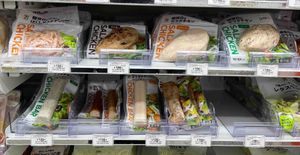The Ultimate Guide to the History and Culture of Bread in Japan
When someone says Japanese food where does your mind go? Sushi? Ramen? Well, what about bread? Not usually. Nowadays, bread is integral Japanese food culture, and is often overlooked in the international community. This guide will give you what you need to know about bread culture in Japan.
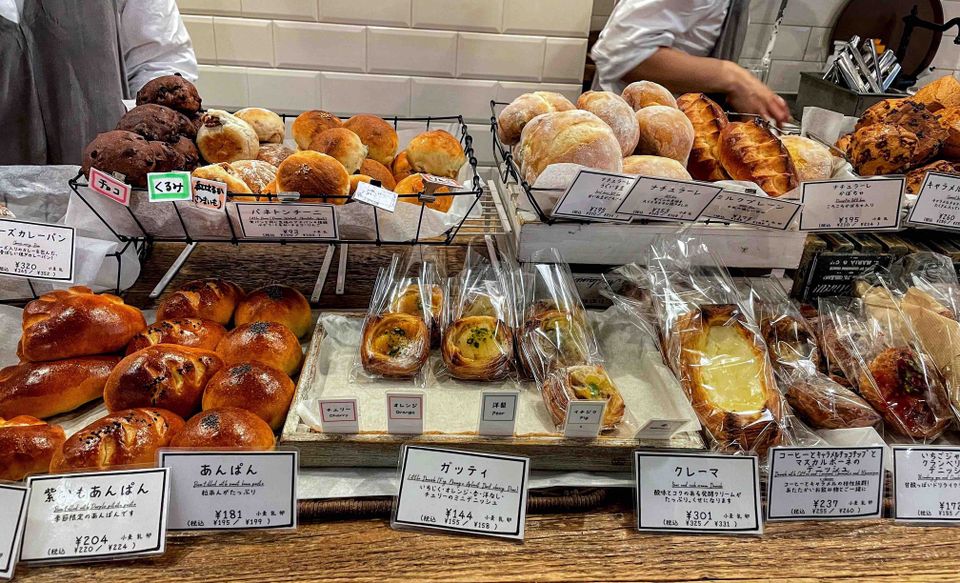
Japan actually has quite a long history with bread, but it wasn’t until the last 80 years or so when bread truly was integrated into Japanese culture. Today bread is a regular part of many people’s lives. This article will give an overview the history and culture of bread in Japan, and what you should know about Japanese bread.
History of bread in Japan
Please note: The years are all approximate and represent the time period in which the events occurred, not the exact year
Chapter 1: Bread comes to Japan [Mid 1500s]
So, who brought bread to Japan? Along with Christianity and guns, the Portuguese introduced bread to Japan around 1543. The Japanese adopted the Portuguese word for bread, pão, and call bread pan, (パン).
While this was the introduction of bread to Japan, it wasn’t really consumed by Japanese, but by traders and missionaries at the time.
Chapter 2: Japan decides to go into isolation [Mid 1600s]
Now let’s fast forward to 100 years, to when Japan entered Sakoku (鎖国) or the closed country period (1639-1854.) It is believed that these policies were implemented in part to remove the colonial and religious influence of Spain and Portugal. During this time, the government implemented deep isolationist policies, including limited trading partners, and nearly no one could enter or leave the country. Unironically, bread was banned as well.
Chapter 3: Japanese people actually start eating bread [1842~]
Alright, now things start to get interesting in the latter half of the Edo Period (1603-1868) around 1842 during the First Opium War between the UK and China. No, Japan did not fight in this war, but it did have a strong influence. After the British overwhelmingly defeated the Qing dynasty, the Shoganate feared the invasion of the British. Accordingly, the Shoganate needed to prepare for an attack – this is when the Japanese military turned to bread.
Depending on the source, there are multiple theories as to why Japan started to feed bread to soldiers instead of rice. One is that military scientist Tarozaemon Egawa believed that bread was a better food for soldiers than rice. Other sources say that bread was easier to be conserved and carried around. And lastly, to prepare rice, a fire had to be made to cool it and consequently, this would create smoke, which would let the enemy know where you were. Perhaps, it is a combination of all three theories. Nevertheless, bread had its comeback.
Chapter 4: Bread starts to become “Japanese” [1868-1945]
While bread was back in Japan, it wasn’t until the Meiji Era (1868-1912) that Western culture, accompanied by bread, spread across Japan. At first, bread consumption was very regional and in areas with high foreign influence, such as Kobe or Yokohama. Home to the largest foreign settlement, Yokohama was key in the spread of Western culture. Japanese people working in these foreign settlements learned how to make bread and other western cuisines and in turn passed this knowledge on to the rest of country.
At the time, bread was not seen as a meal or even part of a meal, but rather a snack. As a result, an pan (あんパン) was born. Invented by Yasubei Kimura in 1874, an pan is bread filled with red bean paste (more on this below.) Due to the popularity his creation, Kimuraya Sohonten Bakery was born and still is in business today.

This an pan is made with chestnuts (kuri an pan)
Chapter 5: Post WWII [1945~]
After World War II, Japan was in ruins and faced food shortages. To assist Japan, the US provided food rations, including wheat and powered milk. Bread appeared in school lunches and quickly began to become part of everyday life.
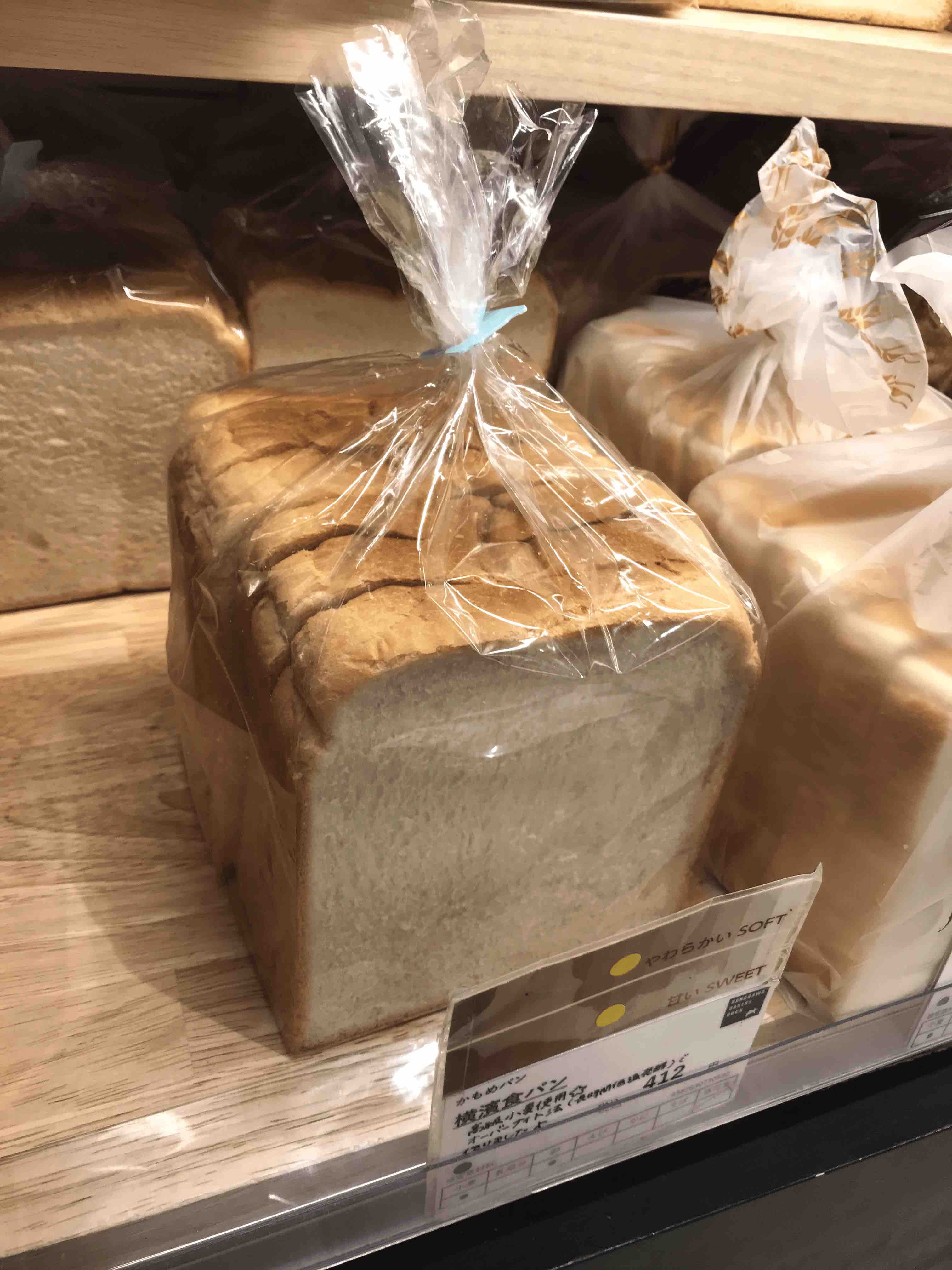
Loaf of classic Japanese bread -Shokupan
Bread Today: Current bread culture and consumption habits
As they say, the rest of history…the consumption of bread continued to grow and so did Japan’s bread culture. Bread is still served in school lunches often as shokupan or agepan, fried bread. Not only are there bakeries, but stores that specialize in one type of bread, such as shokupan.
In fact, family spending of bread overtook rice in the early 2010’s. However, it should be known that consumption wise, rice is still king in Japan.
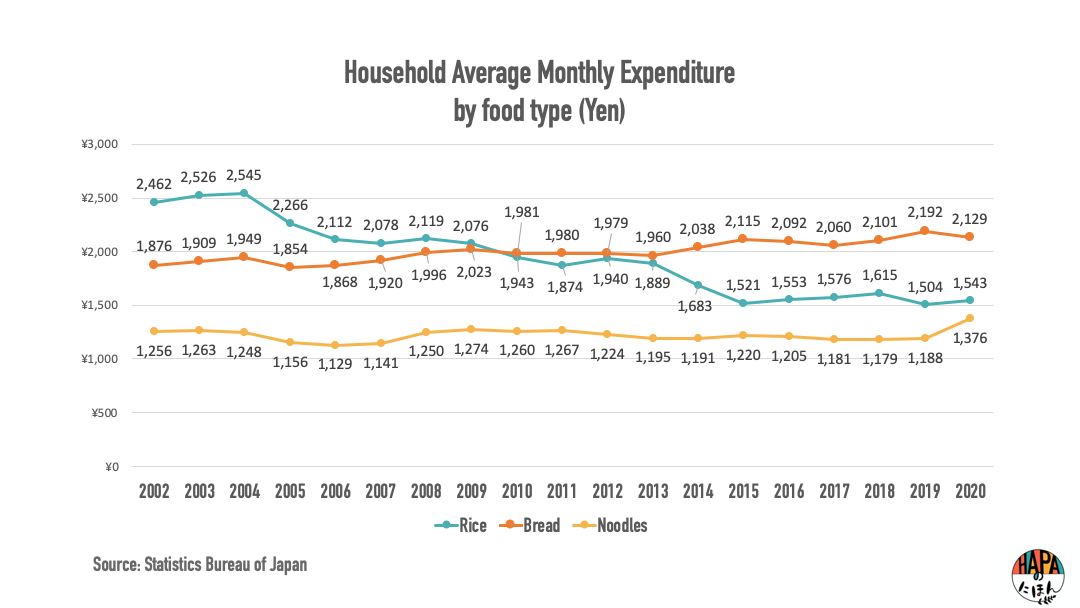
(It should be noted that this survey is household expenditure of bread, rice (uncooked), and noodles (uncooked), so it does not include the purchase of cooked rice (like in a bento) or any food that is eaten out. Therefore this only shows part of the story.)
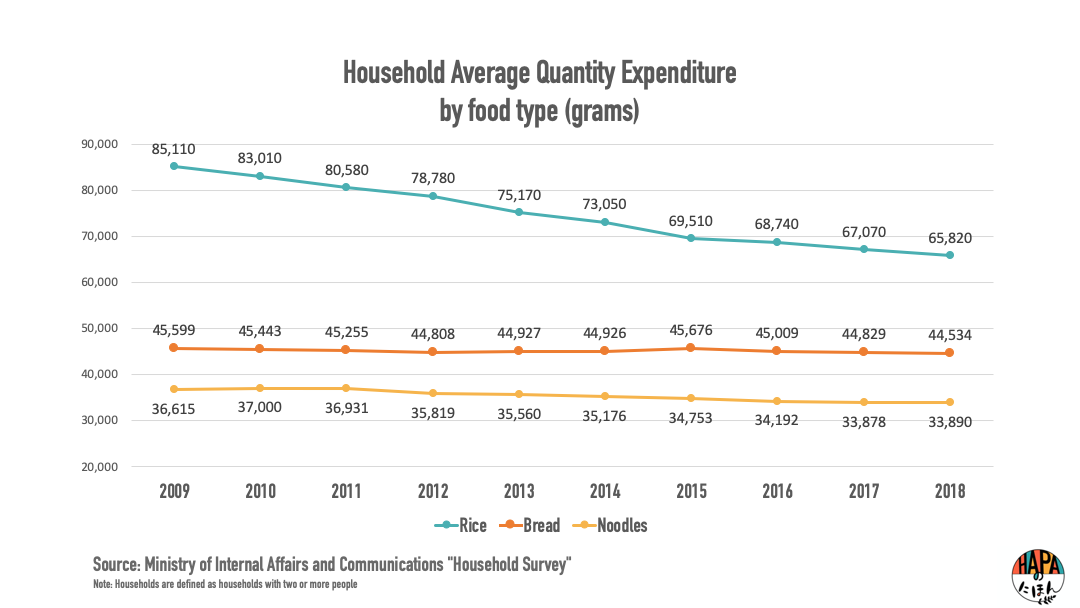
According to the Japan Baking Industry Association, 611,800 tons of bread was manufactured in 1952, and has now doubled to 1,254,062 tons in 2017. So while the pace was slow, it has grown a lot over the last few decades.
How did bread become so popular?
One of the main reasons for the recent preference for bread is Japan’s older citizens. According to the Japan Baking Industry Association, when a couple has children, they are more likely to go through the work to make rice, especially in the morning. However, once children leave the house, there is a tendency to switch over to bread as there is little to none preparation. That helps to explain both the increase in bread and decrease in rice.
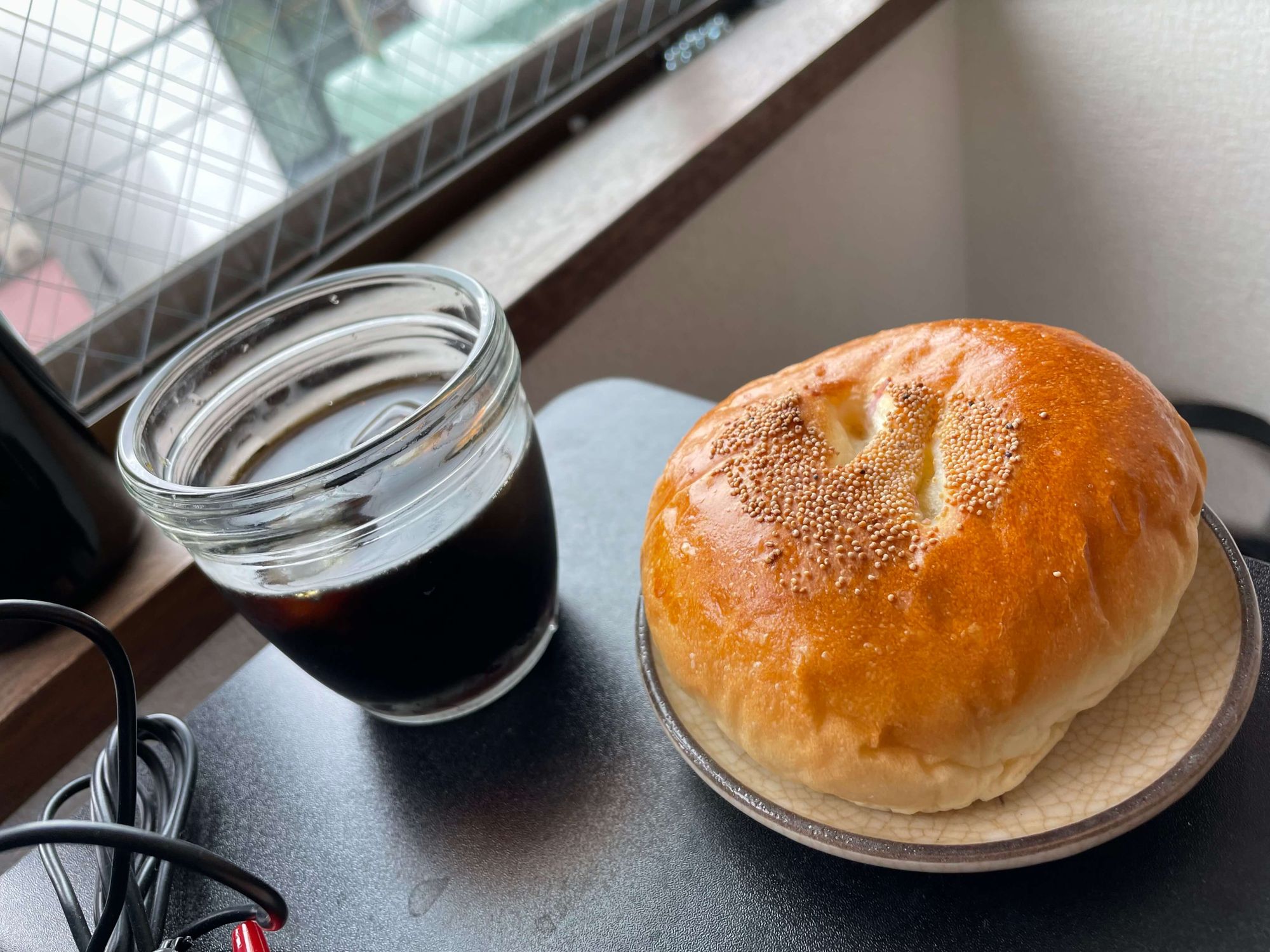
Popular Japanese breads
I hope by now your interest in bread has piqued. Let’s take a look into Japanese breads you should know.
The typical Japanese breads are soft and light, unlike some of their European counterparts. That being said, one can find harder breads in Japan, especially in recent years with the popularity of European style bakeries.
An pan (あんぱん)
Japanese red bean bread – a soft bread with red bean (adzuki) paste inside. There are many variations of this bread, including chunky vs smooth red beans, or even chestnuts and sweet potato. I dare say that you won’t find a bakery in Japan without some form of an pan.
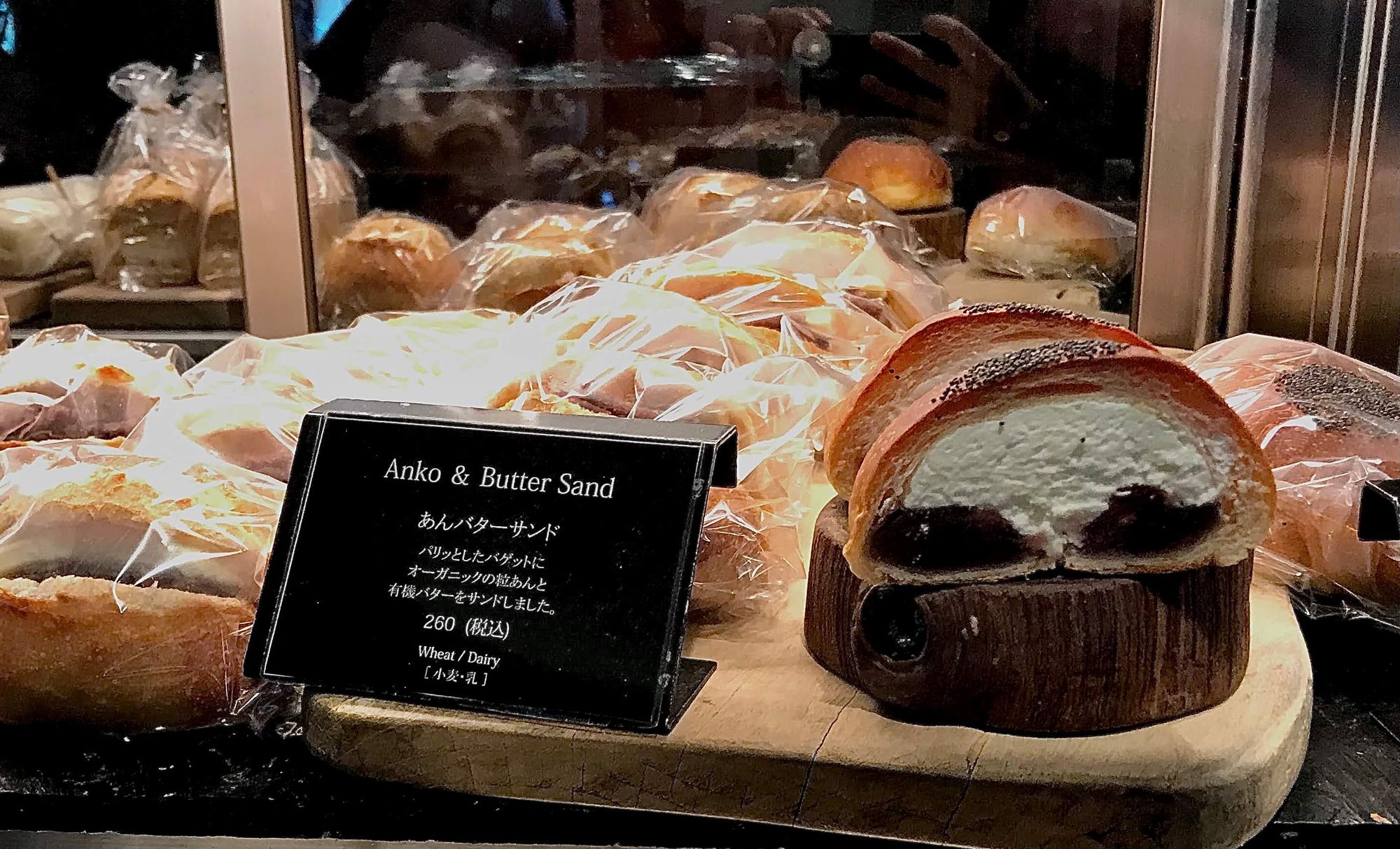
A Fancy take on An Pan, with cream inside
In fact, there is a beloved super An Pan Man or Red Bean Man. It started off as a children’s book in 1973, and was adapted into a TV series that is still running today.
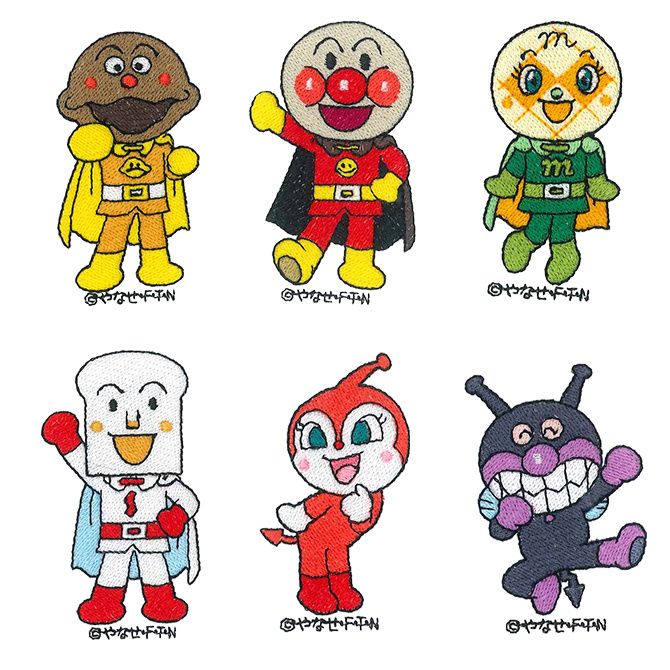
[From Top Left to Right Bottom] Karepan Man; Anpan Man; Melonpan Chan; Shokupan Man; Dokin Chan; Baikin Man
Shokupan (食パン)
In my eyes, what the baguette is to France, Shokupan is to Japan. Shokupan (食パン), – Japanese white bread sometimes called milk bread.
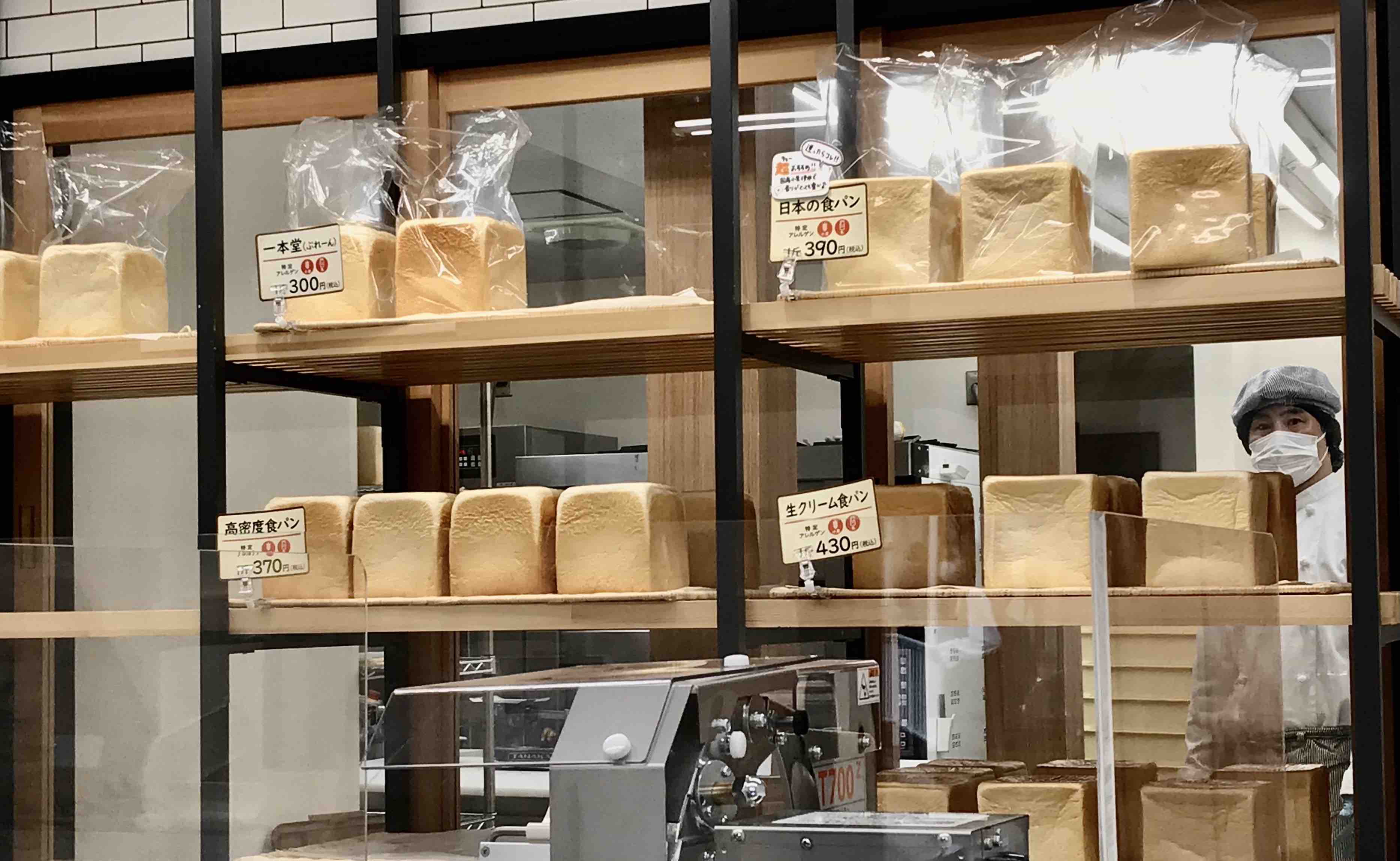
Specialty Shokupan bakery
This is Japan’s most consumed bread, and in recent years has gained popularity abroad as well. Characterized by its square shape, it is made with milk and butter, making it much richer than its white bread counterparts. Popular as toast, sandwiches, and even plain, there are specialty shokupan stores, some places charging ¥ 6,500 (~$ 65) for one loaf. (Shokupan man is also part of Anpan Man above.)
Melon pan (メロンパン)
Contrary to the name, this bread does not taste like melon, but is thought to be named due to its melon-like appearance. It is a sweet bread known for its crisp cookie like crust.
Especially popular among kids, there is also a melon pan man character from the An Pan man. (see above)
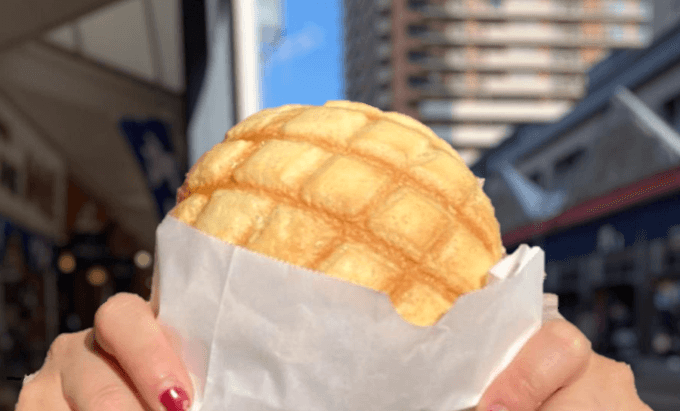
Some bakeries even serve Curry Pan freshly fried to order
Curry pan (カレーパン)
A fried bread filled with Japanese curry. Curry pan is covered in panko, Japanese bread crumbs known for a distinct texture, which makes this bread extra crispy. This is probably one of Japan’s most popular savory breads and can be traced back to 1877. (He is also part of Anpan Man.)
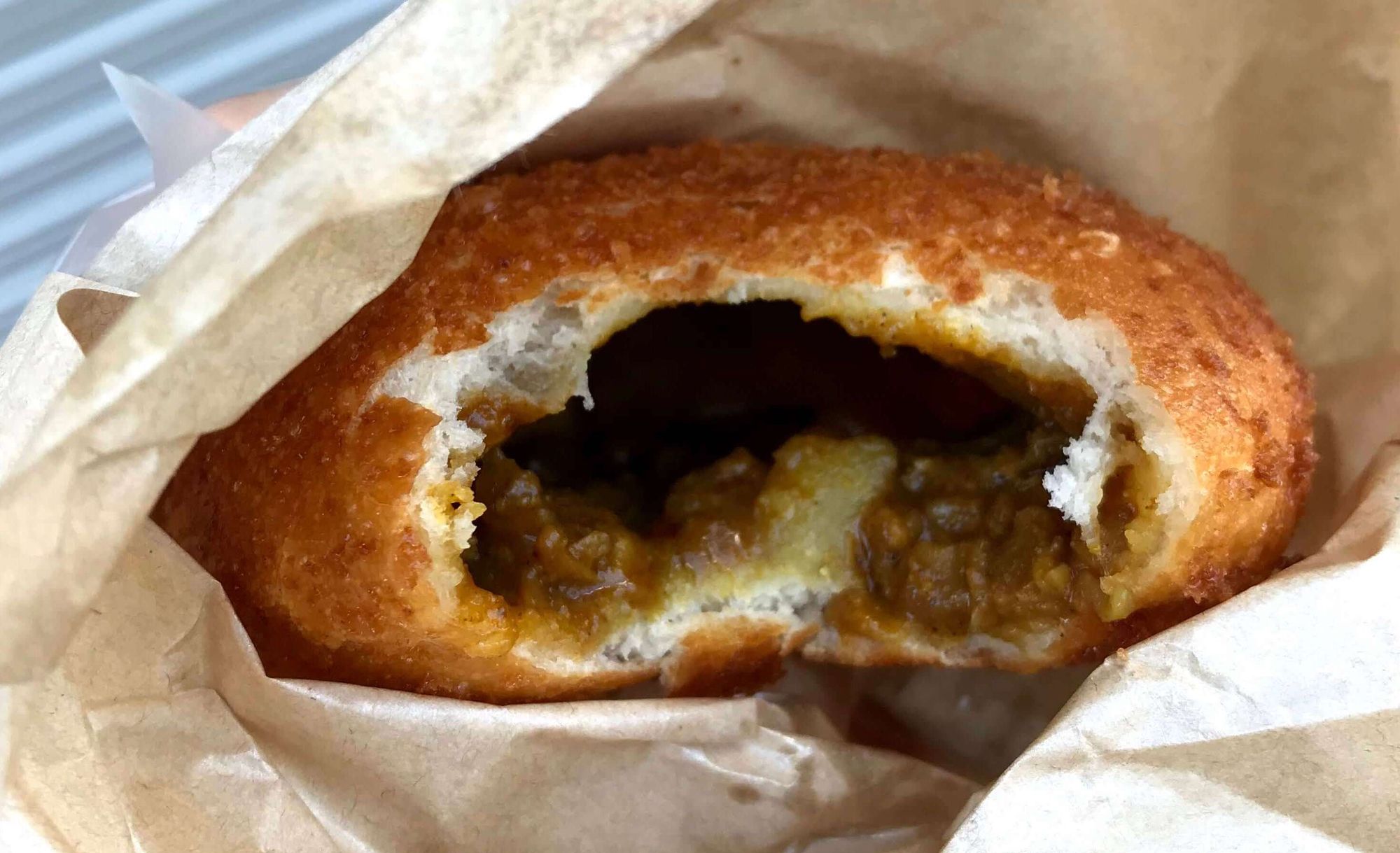
Some bakeries even serve Curry Pan freshly fried to order
Cream pan (クリームパン)
Invented in 1904, cream pan (cream bread), is widely popular as well. Similar to an pan, the traditional cream pan is a soft bread with cream inside.
Creampan Man is a part of Anpan Man, but he is a minor character.

Cream pan is known for its crown like shape
Current trends in Japanese bread culture
Bread continues to evolve and so has the rise of different breads and unique bakeries.
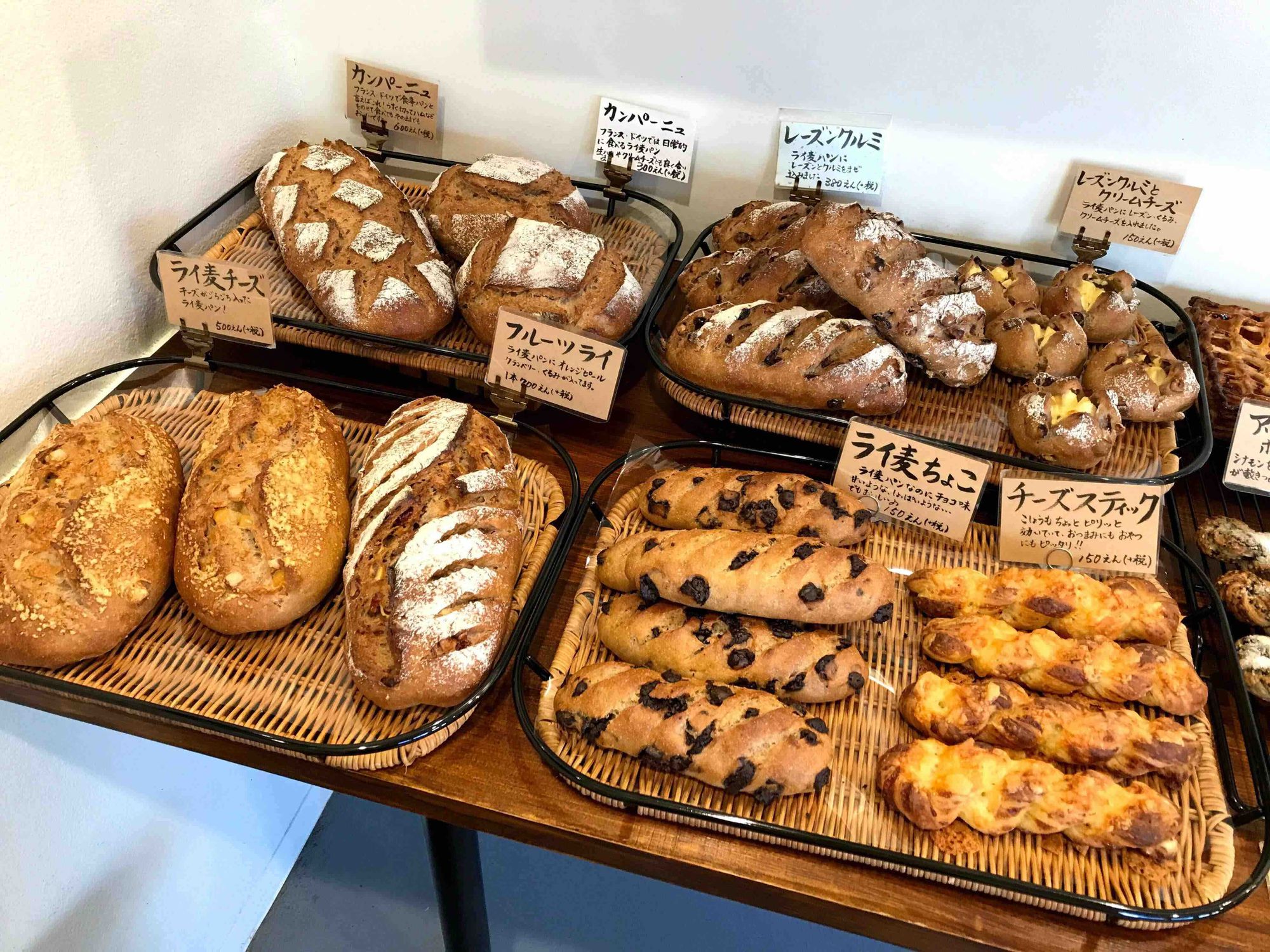
Variety of hard(er) breads
Fusion Breads
Japanese people love French style bread. Meet one of of my favorite breads “milk france” ミルクフランス, is fusion bread, likely inspired by cream pan or koppe pan. a baguette like bread filled with Japanese sweet cream.
Croissants are also quite popular in Japan. Unlike French croissants, they tend to be lighter, as in less rich. Which sounds like they wouldn’t be good, but let me tell you. Its just a little different. I think it is fine to include this—you have been so thorough, you might as well include. I find it interesting.
The sweet bread of the 2021: Maritozzo
Around June 2021, Japan started the Maritozzo (マリトっツォ) trend. Originally from Italy and more of a sweet than bread, it is a soft brioche bun filled with whipped cream. You can find them everywhere in Japan now, from convenience stores to grocery stores to bakeries. Obviously these are not Italian authentic, but made to adjust to the preference of Japanese.
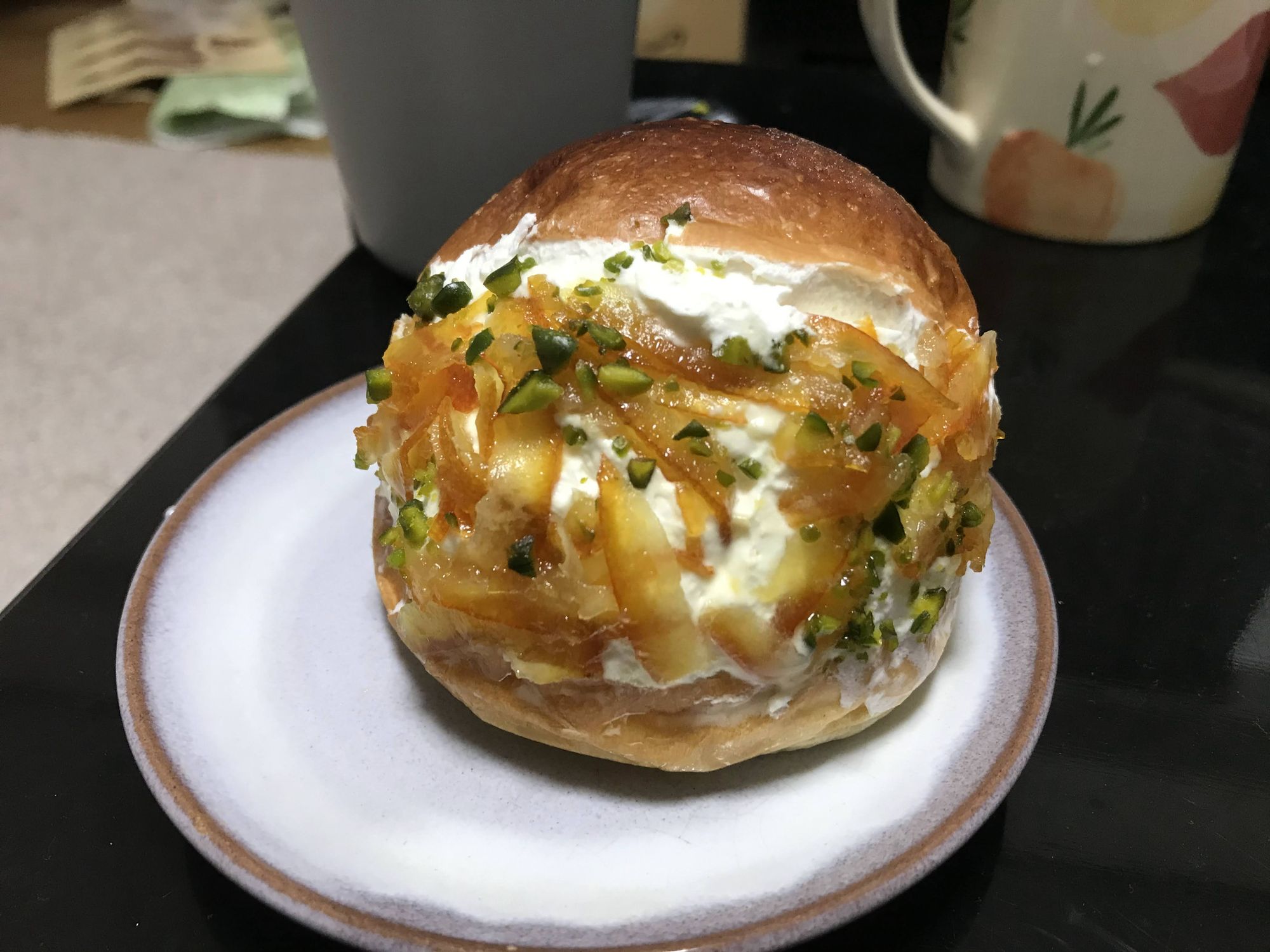
Maritozzo with orange
Final Thoughts
Japanese style bread is one of the old fusion foods of the East and West that has become an essential part of Japanese food culture. Next time you have the opportunity, I encourage you to give Japanese bread a try.
Did you find anything particular interesting? Have questions or want to know more? Feel free to contact me or share the article.

